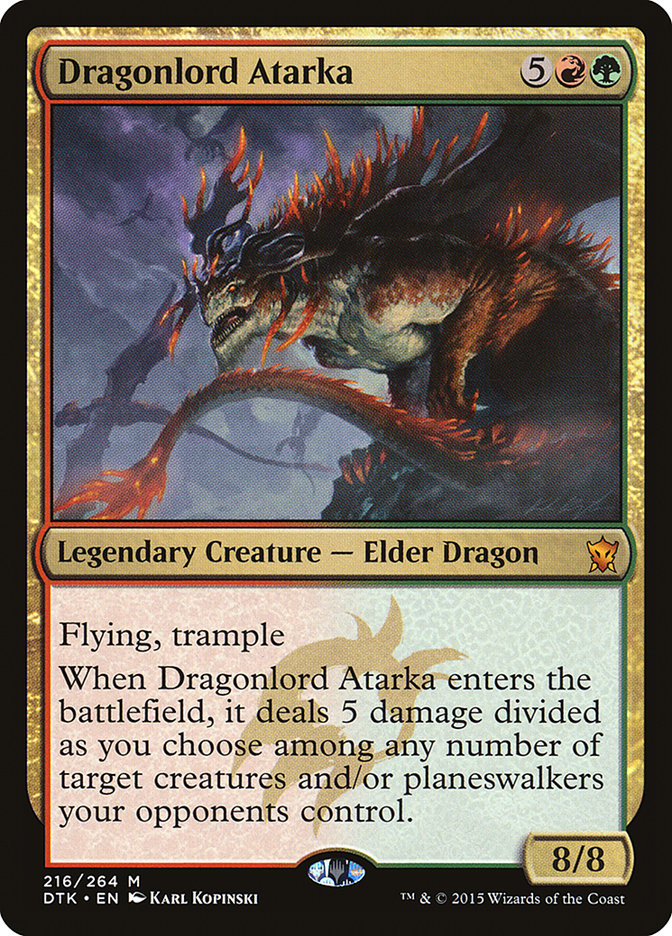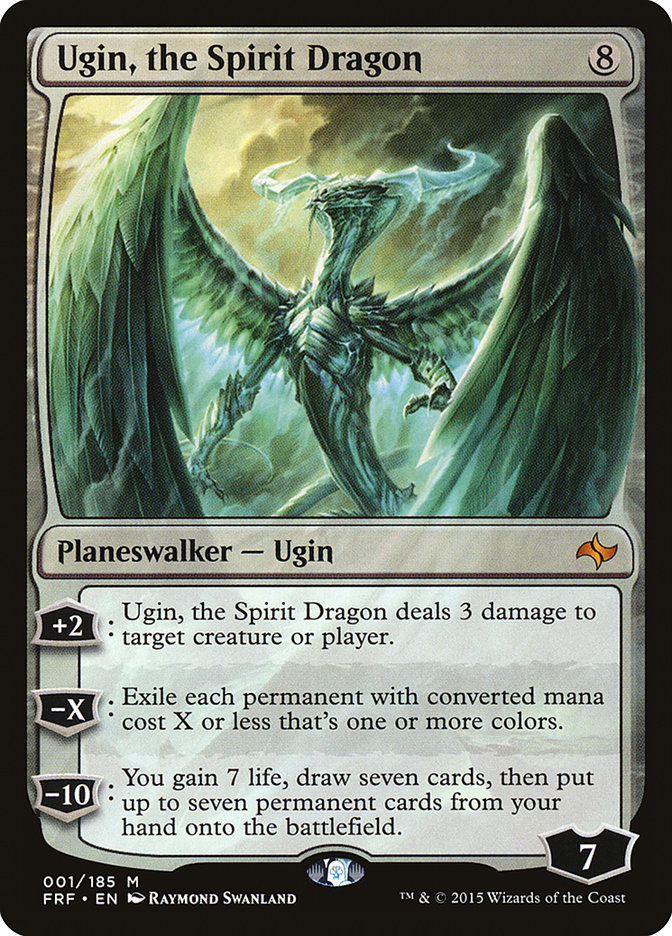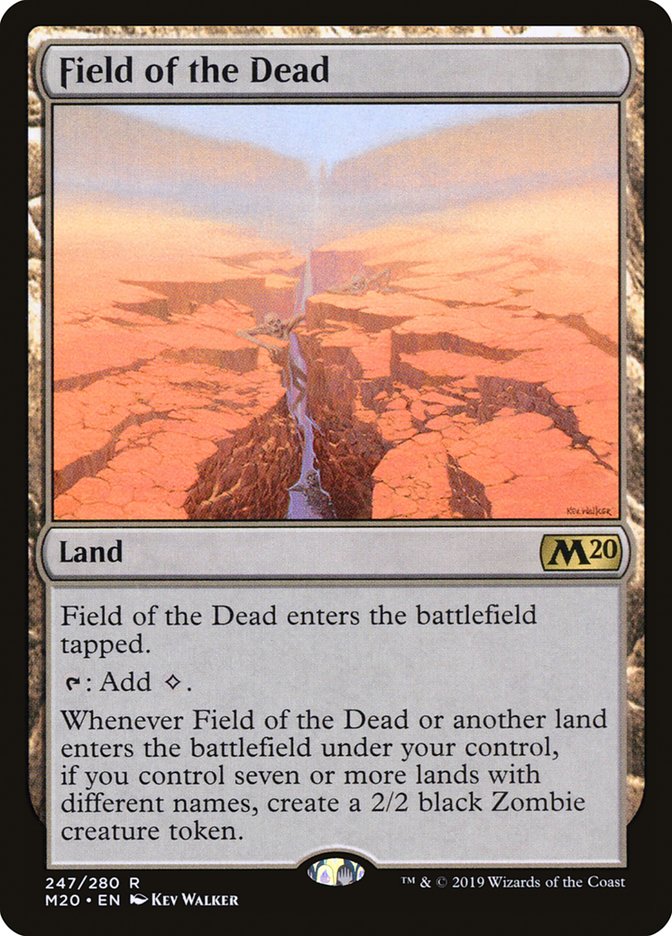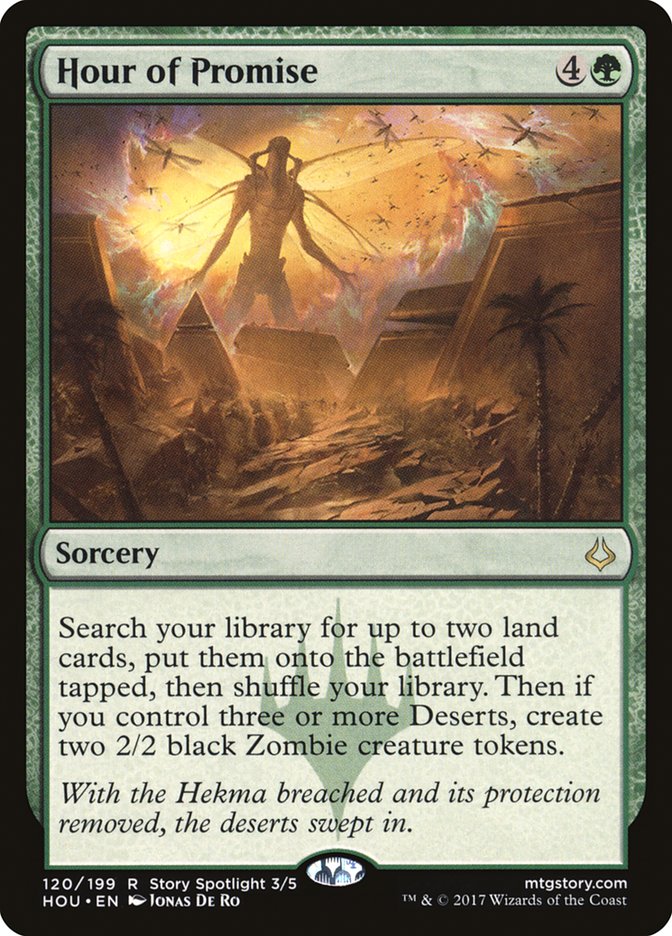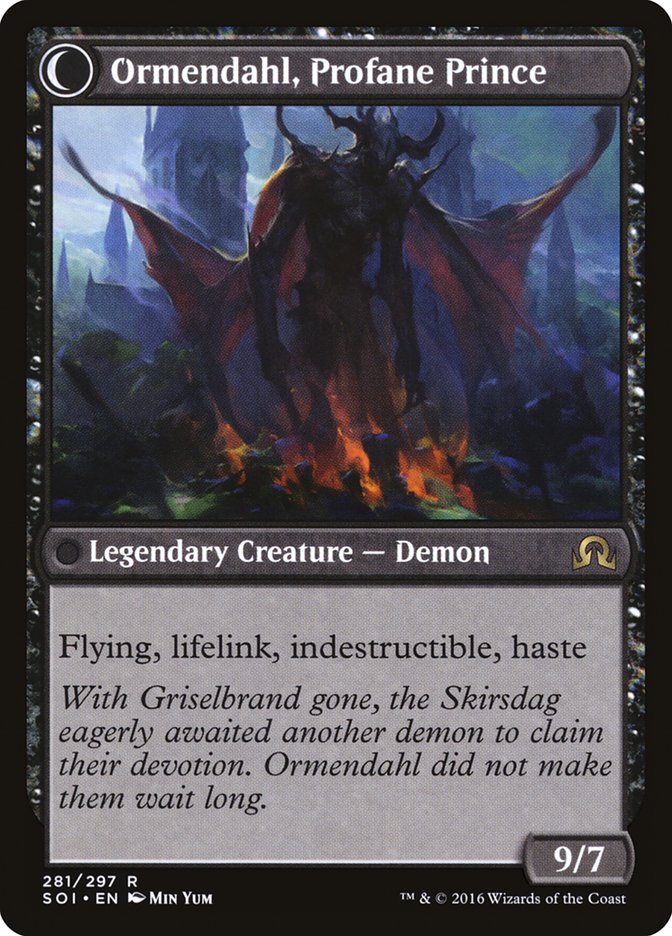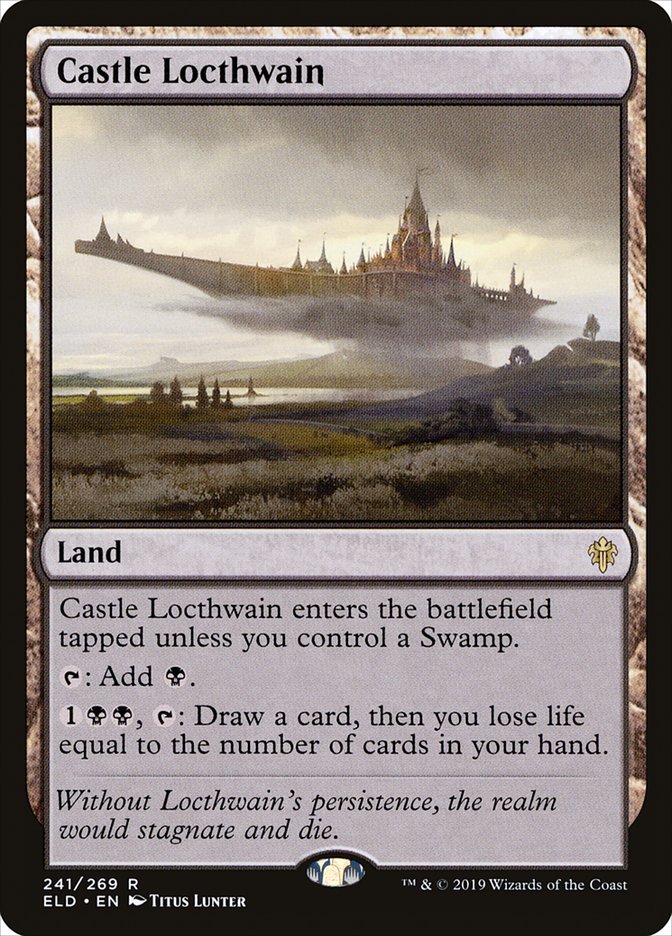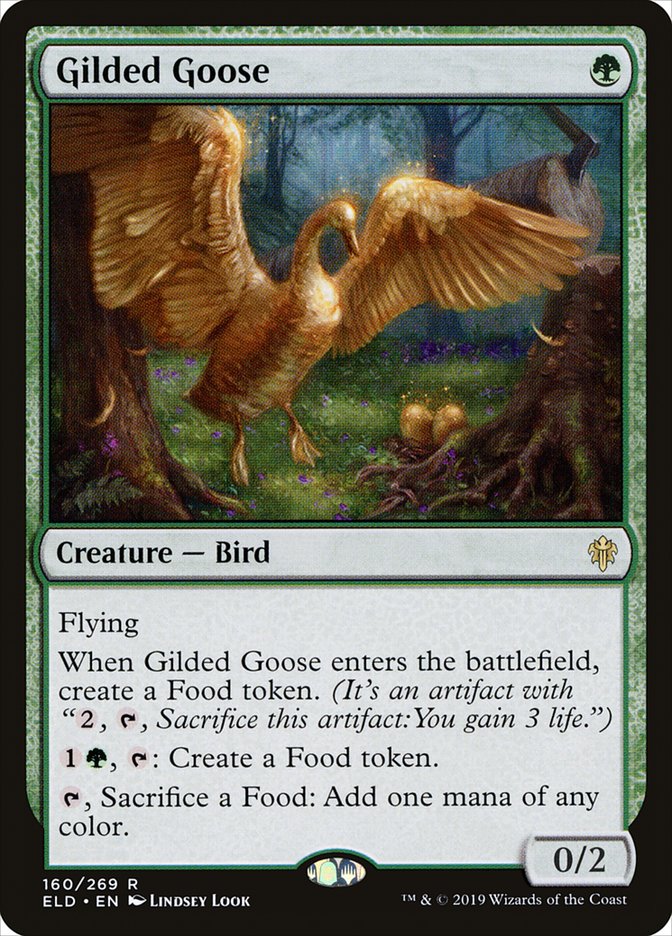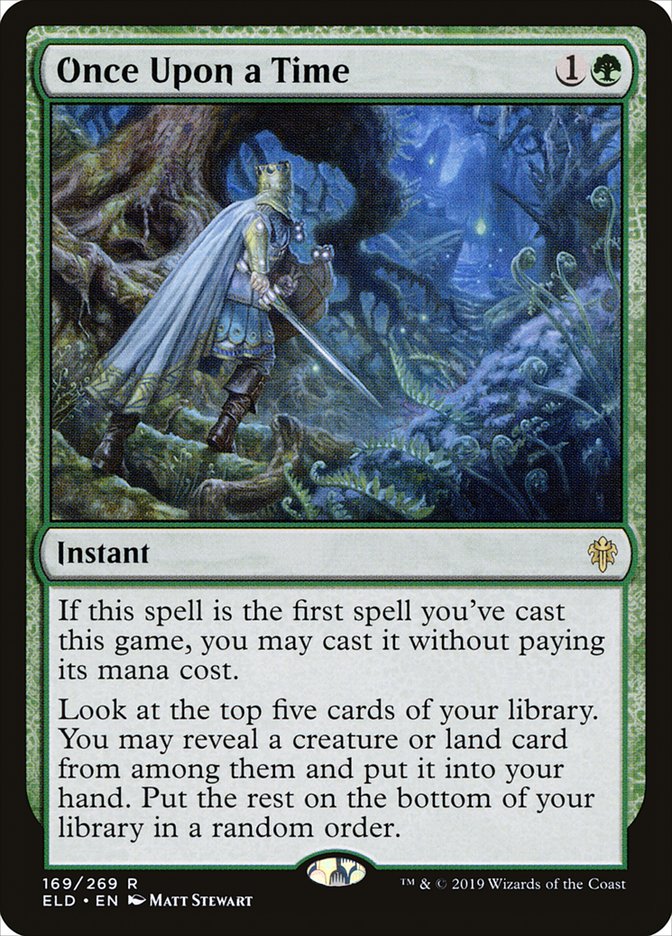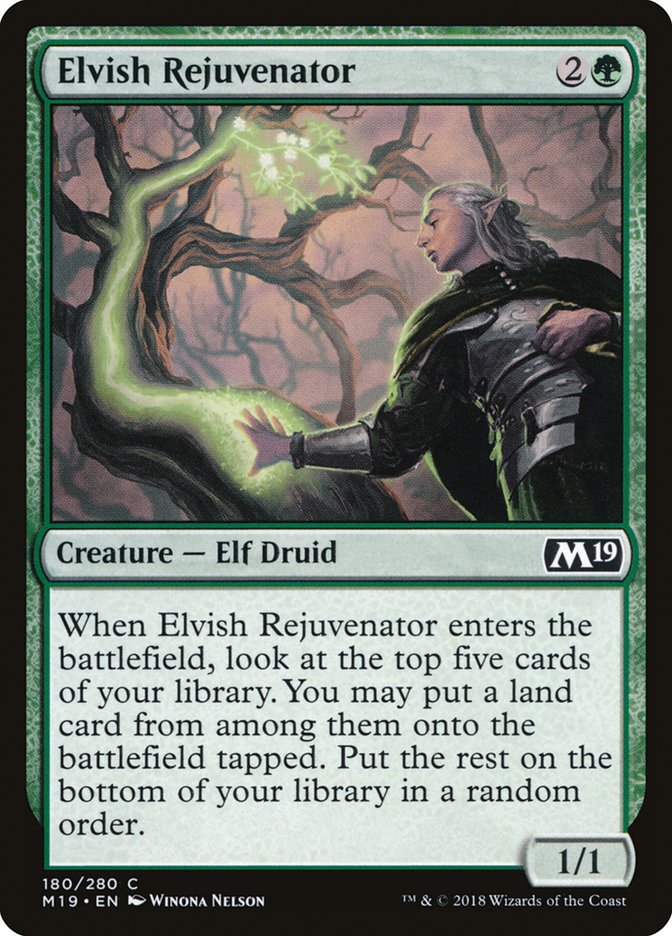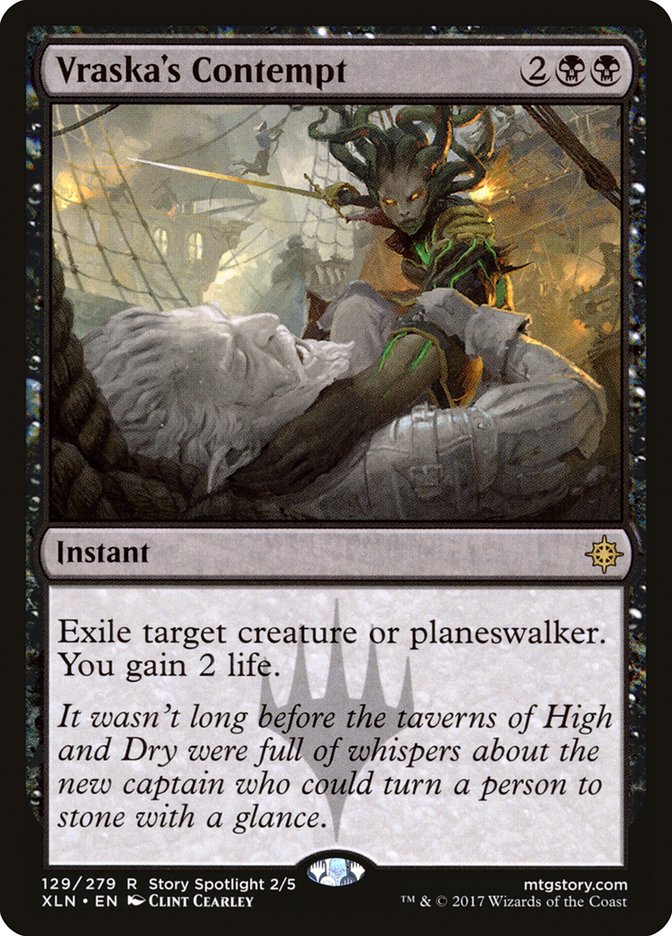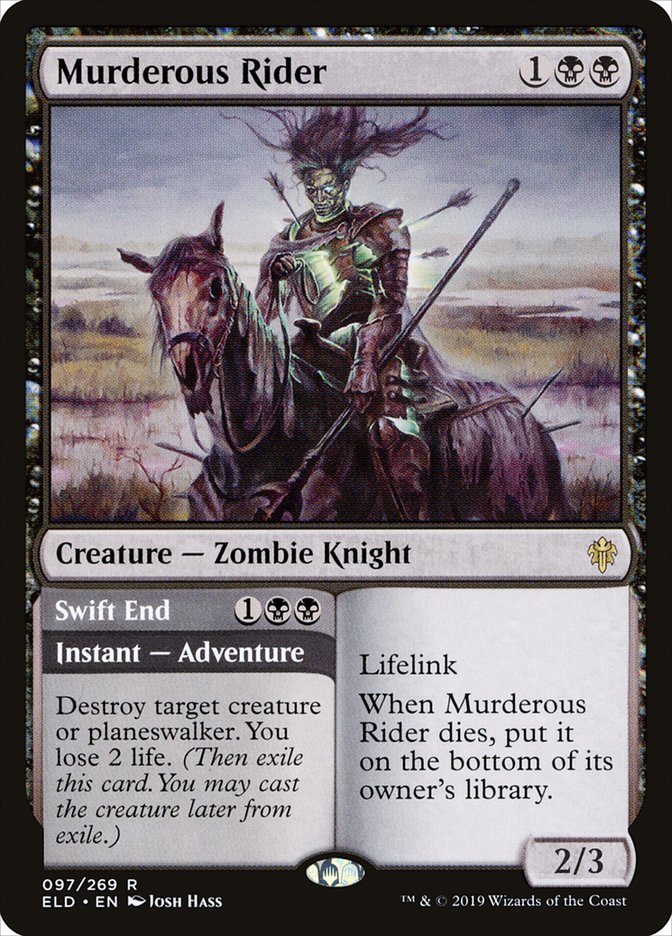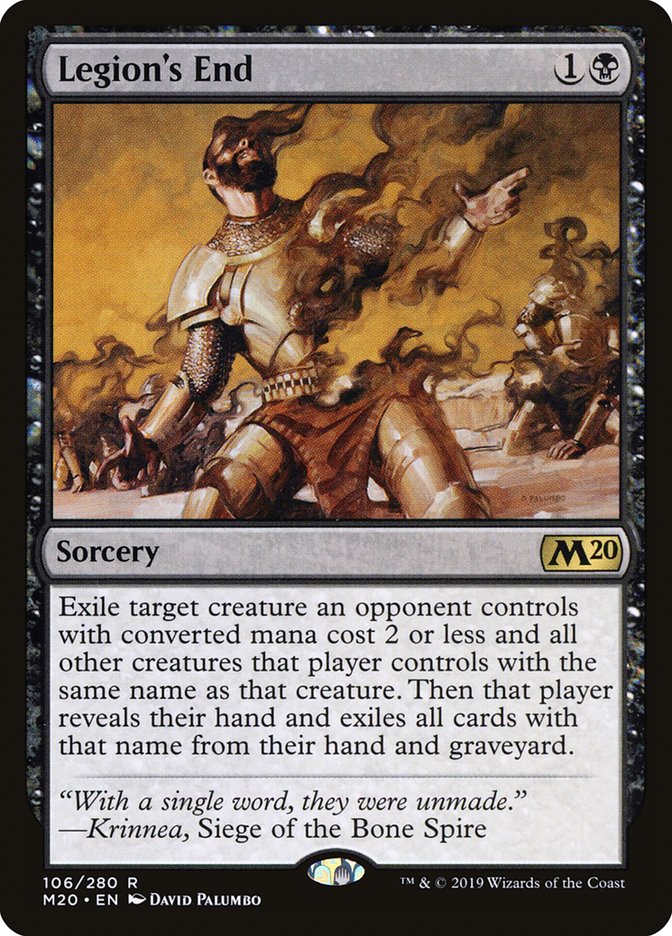After Mythic Championship VI, there wasn’t a lot of time to figure out what to play in Modern and Pioneer at SCG CON Winter. Autumn Burchett and I had been working together for the Mythic Championship and continued working together for to prepare the Season Two Invitational. We were basically on the same page in Modern, but blank slates in Pioneer a few days before the event, so we were playing as many matches as we could on Magic Online.
A few days before the event, I was surprised to get a message from Autumn that they wanted to lock in a build of green-based, red-splashing ramp with maindeck Dragonlord Atarka; Ugin, the Spirit Dragon; and Ulamog, the Ceaseless Hunger that Cain Rianhard had sent them. I forgot that Autumn likes to settle on a deck well before I usually do, so I think they were pretty happy to select the first thing that felt good to them to start getting experience with it. I tried playing it, since Autumn seemed to think it was so good, and I didn’t really get it. I kept playing against aggro decks and I didn’t understand why I’d want nine cards in my deck that cost more than six mana, so I’d sideboard out most of them in every match.
Then I happened to turn on an Aspiring Spike stream where he was playing a blue-based Sultai Hour of Promise deck and talking about how no one can beat Hour or Promise for Field of the Dead, so you don’t need more top-end than that, and that made a ton of sense to me. Reactive blue cards and ramp spells felt like an awkward strategy, though. I want to tap out to ramp, so I don’t want to be trying to counter my opponent’s stuff; I want to ignore as much of it as possible by going over the top but have some early removal to make sure I don’t die while I’m ramping.
That led me to Golgari Midrange with Hour of Promise, which I described as being “like the Ramp deck, but with Thoughtseize instead of Ugin.”
Creatures (14)
Lands (25)
Spells (21)

Let’s start with the cards the deck is designed around: Field of the Dead and Hour of Promise.
In Pioneer, there are years of cycles of comparably powered multicolor lands. Technically, some are stronger than others, but the gap is pretty small. Hissing Quagmire, Blooming Marsh, Temple of Malady, and Overgrown Tomb all have different strengths and weaknesses and I just don’t care that much about which ones I have to play. In fact, playing a mix of them works pretty well, since you don’t want too many tapped lands, but it’s nice to get value when you do play a tapped land, and several of these cycles kind of have explicit diminishing returns. This means the cost of building your mana in such a way that you can play Field of the Dead is minimal compared to what it looked like in Standard, where you had to play much weaker options like Guildgates and lands that gain life.
This means that regardless of whether you’re playing Hour of Promise or ramp spells, if you’re planning to play long games with your deck, you should almost always play at least a few copies of Field of the Dead and do a little work to make your mana support it (this definitely applies to any blue control deck). The power level of Field of the Dead is just completely off the charts, and the only reason it hasn’t already been banned is that it’s so hard to play a reactive deck in Pioneer that games just don’t last long enough for it to matter, but one way or another, either people will either learn to build better reactive decks or more cards that cause games to end super-fast will get banned, and Field of the Dead will be too oppressive in the format.
Given the existence of Field of the Dead, Hour of Promise is just absurd. Autumn started calling it Grave Titan, but it’s obviously a stronger effect for less mana. They can’t really kill the source of the Zombies and you make more of them. You make so many Zombies that the 6/6 really wouldn’t matter much. On top of that, it’s not like this is just some five-mana enchantment that makes a bunch of Zombies; it gives you more lands that do normal land things, like tap for mana, except sometimes they also do things that normal lands don’t do, like turn into 9/7 Demons with haste, flying, lifelink, and indestructible.
If your deck is built to support Field of the Dead and contains Westvale Abbey, Hour of Promise isn’t just the best five-mana threat, it’s a better threat than almost everything that costs more than five also. It’s so much better than everything else that costs five that it’s also better than everything that costs four. More to the point, it’s so good that your deck just doesn’t need other cards that cost four or more mana because it wins the game by itself, going over the top of basically everything.
I really don’t think I can overstate how egregious this combo is, which is interesting, because despite all this, I’m still not actually sure it’s the best deck in Pioneer.
A brief aside on that. Somehow, despite all basic logic about the power level of Magic cards and overwhelming evidence, they didn’t ban Nykthos, Shrine to Nyx, which is more than a little at odds with Field of the Dead in terms of playing both together, so despite everything I’ve said, I actually think Field of the Dead is only the second-most-broken land in the format, and Mono-Green Devotion is likely a better deck.
Anyway, as I touched on briefly, the other major innovation in this deck is the addition of Westvale Abbey to the mix as part of the central gameplan with Hour of Promise. The ideal plan for the deck is to play five differently named lands, and then cast Hour of Promise and either end up with seven differently named lands including Field of the Dead and Westvale Abbey, or maybe six differently named lands with two Fields and Westvale Abbey, with a plan to make even more Zombies the following turn. If your draw allows, the next utility land you usually want is Castle Locthwain.
Because the deck has other creatures, and because of the way that multiple copies of Field of the Dead work, you can usually transform Westvale Abbey a turn or two later, which fixes most of the problems with this strategy in that it beats a sweeper, flyers, or burn. The most common answer that people have to Ormendahl, Profane Prince is to bounce it, but you can easily replay and transform it again, since playing the Westvale Abbey will give you more Zombies.
As I mentioned, the other essential utility land is Castle Locthwain. Because so much of the deck is dedicated to making mana, you can empty your hand fairly easily, and because the deck has a lot of removal and can gain life using Gilded Goose, this card can really help in grinding people out.
Tireless Tracker is the other main threat in this deck, which is a structure transported from my old Standard Seasons Past deck (speaking of which, I actually started with a Seasons Past and Dark Petition in this deck but cut them because I sideboarded them out against everyone as they were completely unnecessary). Tireless Tracker clearly plays extremely well in a deck that’s based on putting lands onto the battlefield and casting cheap spells. Tireless Tracker is the threat that bridges you when you don’t draw Hour of Promise.
People have often expressed surprised at seeing Gilded Goose rather than an Elf or Arboreal Grazer, but this deck puts so many lands onto the battlefield relative to its curve that you really value Gilded Goose as a mana sink. You do want to ramp to start your game because the three-mana plays available to you are so much better than the two-mana plays, but after that one boost, the real value is as a lifegain engine, which this sort of midrange deck really benefits from.
Once Upon a Time can look a little out of place in a deck with only fourteen creatures, but I’ve found it extremely hard to compete with decks with Once Upon a Time if my deck doesn’t have it because you’re just so much more likely to miss a beat somewhere. Because the deck has to play so many colorless lands, finding both of its colors can sometimes be just a little less reliable than you’d like, and Once Upon a Time is a big help there. It also helps with finding key cards like Elvish Rejuvenator (which I typically take over almost anything early in the game) and Field of the Dead.
This kind of late-game deck that’s focused on the battlefield is extremely weak against spell-based decks, which necessitates the inclusion of four Thoughtseize in the maindeck. That’s simply a reality of the archetype.
I think Abrupt Decay is the best and most versatile removal spell in the format. The format is generally pretty hostile to expensive cards, so Abrupt Decay hits almost everything, and the flexibility to noncreature permanents is highly relevant.
Elvish Rejuvenator is the best ramp spell because it find nonbasic lands, you can find it off Once Upon a Time, and getting a 1/1 creature is just generally strong. The combination of this with Once Upon a Time and Hour of Promise is how you have enough redundancy in finding Field of the Dead that you don’t need more threats.
People have also been surprised by Vraska’s Contempt, since it’s so expensive, but I think exiling things is very important in this format, where people play cards with dies triggers or recursion and indestructible creatures, and I need to cover my bases where Abrupt Decay doesn’t work, especially for expensive planeswalkers like Vivien, Arkbow Ranger and Nissa, Who Shakes the World. To do that, I’d need a three-mana spell like Hero’s Downfall or Murderous Rider, and I think it’s worth the extra mana to gain life and exile, especially given that nothing else in the deck costs four mana.
Autumn convinced me to cut one Vraska’s Contempt from the three I had originally to fit a Murderous Rider to vary my costs and get the ability to find a removal spell off Once Upon a Time. I wouldn’t want to shift further in this direction because I think losing more life and having fewer ways to exile things would really hurt, and I’m still not entirely sold on the Murderous Rider.
Courser of Kruphix has done really good work for me. It’s a strong card and you’re pretty good at changing the top card of your library, but it gets worse in multiples and I think Elvish Rejuvenator and Tireless Tracker are stronger, so I’m just playing one. Unlike Autumn, I also played one Nissa, Vastwood Seer, and I was very happy with it. At first, I thought I might want more than one, but drawing two would be really bad, since you might run out of Forests and you really don’t want to have to play two Forests anyway, so I think one is perfect.
Fatal Push is great in this deck, since Food and Clues allow you to trigger revolt when it’s important, but some decks don’t play anything it can kill, so I didn’t want to play four in my maindeck, though I do like having access to four.
Autumn played a Legion’s End, but I didn’t, since this is the slot I used for Nissa. I do think the card is really strong in the format, and I like having access to two in the 75, and I think it’s very reasonable to play maindeck.
The lands are basically chosen to maximize power and diversity. Playing a second copy of anything is horrible to the point that I’m really not sure if the second Overgrown Tomb is better than playing a Jungle Hollow. I actually suspect it isn’t, since it’s nice to be able to gain a life with Hour of Promise.
I’m not going to go over every card in the sideboard, as I think they’re fairly self-explanatory, and I think the sideboard is more flexible than the maindeck, which I think is pretty close to right. I could see cutting a spell for a 26th land, and I could see moving some numbers around, but I wouldn’t change much here.
When people asked how good my deck is, I answered with things like, “I think it’s the best reactive deck in the format.” I’m not sure what the best way to put it is, but basically I think that if you want to interact with your opponent and play a longer game, this is the best way to do it. Every deck that I think might be better than this deck is more focused on killing the opponent; either they’re a combo deck or an aggro deck.
I could also believe that a counterspell / Field of the Dead deck could be better, especially in certain metagames, but I personally prefer this to Bant Ramp because I don’t think Supreme Verdict is all that well-positioned and I think Thoughtseize pairs better with ramp spells than counters do. I also think this deck is heavily advantaged against Bant because I believe the combination of Thoughtseize and Tireless Tracker matters more than their ability to counter and Hour of Promise.
As for a sideboard guide, the only time I thought about taking out Hour of Promise was against Jeskai Ascendancy, where it was bad but I couldn’t cut it because I had too many removal spells that were even worse. It’s easy to cut removal that doesn’t line up well.
I often cut Tireless Trackers against fast decks where I don’t think I’ll have time to sacrifice the Clues, but I think I’ve actually been doing that a little too much when I bring in removal. The removal slows the game down, but then you need to pull ahead or they’ll just eventually stick a threat, and Tireless Tracker is the easiest way to do that, so I think it’s rare that you want to cut all of them. Autumn shaved an Elvish Rejuvenator sometimes, and I think I probably didn’t do that enough. I also think you can potentially shave a Field of the Dead when you don’t need a lot of them to go over the top of what your opponent is doing.
When I cut Tireless Trackers, sometimes I’d also cut Once Upon a Time because it had fewer things to find, but I think that’s also wrong, because Once Upon a Time is an important part of the deck’s manabase. All of this is to say that I’m not precisely sure how to sideboard with the deck yet, and I suspect that I should err more toward trimming cards like one Goose, one Elvish Rejuventator, one Field of the Dead, maybe one Once Upon a Time than I had been doing.
I also typically sideboard all of my Thoughtseizes out against aggressive decks, but again I think I might have been doing that too much. Particularly against Mono-Green Devotion, I would cut Thoughtseize for more removal, but I think I should have just been shaving cards instead, as it’s important to break apart their draws.
For now, I think this deck is very good but not broken, but I think it’s a mistake if this deck is still legal next year, since I think both Once Upon a Time and Field of the Dead need to be banned.


